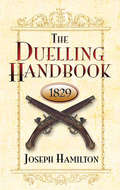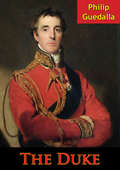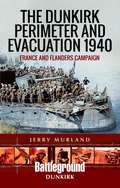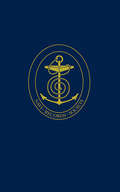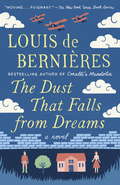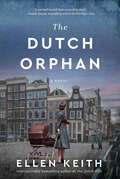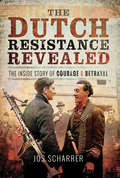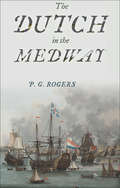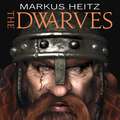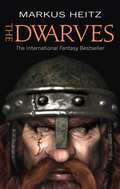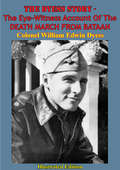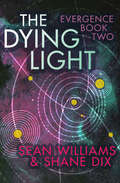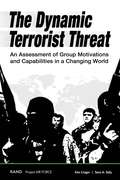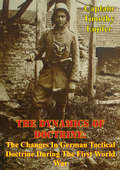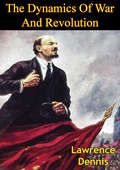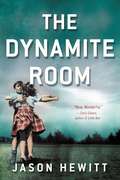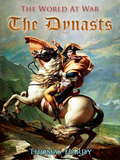- Table View
- List View
The Duelling Handbook, 1829
by Joseph HamiltonProfoundly embedded in our cultural consciousness, the art of duelling evokes images of a dramatic past, where the laws of courtesy, civility, and honor were enforced by the end of a rapier at the first rays of dawn. In this engrossing historical record of the codes and conduct of the duel — originally written in 1829 as "The Only Approved Guide Through All the Stages of a Quarrel" — every aspect of the arcane practice is brought to fascinating light.Offering authentic advice on such subjects as withdrawal of challenges, weapons, distance, and the fate of survivors, The Duelling Handbook also brims with vivid anecdotes recounting duels between brothers, duels between friends, and those arising from disagreements over religion, women, gambling, and other volatile standpoints. A genuine historical treasure, Hamilton's unequaled guidebook will captivate — and enlighten — a wide audience of readers, especially those intrigued by the moral and sociological issues surrounding the art of the duel.
The Duke Of Shadows
by Meredith DuranMeredith Duran returns with another witty, humorous and smart romance. Fans of Julia Quinn, Jane Feather and Eloisa James will delight in Meredith's trademark headstrong heroine, cunning hero and tale of deep emotional intensity!From exotic sandstone palaces... Sick of tragedy, done with rebellion, Emmaline Martin vows to settle quietly into British Indian society. But when the pillars of privilege topple, her fiance's betrayal leaves Emma no choice. She must turn for help to the one man whom she should not trust, but cannot resist: Julian Sinclair, the dangerous and dazzling heir to the Duke of Auburn. To the marble halls of London... In London, they toast Sinclair with champagne. In India, they call him a traitor. Cynical and impatient with both worlds, Julian has never imagined that the place he might belong is in the embrace of a woman with a reluctant laugh and haunted eyes. But in a time of terrible darkness, he and Emma will discover that love itself can be perilous - and that a single decision can alter one's life forever. Destiny follows wherever you run. A lifetime of grief later, in a cold London spring, Emma and Julian must finally confront the truth: no matter how hard one tries to deny it, some pasts cannot be disowned...and some passions never die.Looking for more Meredith Duran novels? Try Written On Your Skin or her Rules for the Reckless series.
The Duke [Illustrated Edition]
by Philip GuedallaIncludes over 100 maps of the actions, engagements and battles of the entire Peninsular War."Philip Guedalla wrote "The Duke" in 1931, when the exploits of the First Duke of Wellington were still generally known to his audience....In a brisk but witty narrative, Guedalla retraces the life and long career of Arthur Wesley, later Duke of Wellington. Wesley's unpromising youth provides no foreshadowing of his future greatness...Guedalla rescues Wellington's highly successful apprenticeship in arms in India from historical obscurity; only Jac Weller has covered that period better. Wellington's successes in the Peninsular War and at Waterloo have been well-documented and Guedalla does not place undue emphasis on this portion of his career. Guedalla does carry the narrative forward into Wellington's long career in government and in politics after Waterloo, where, despite long and faithful public service, he might fairly be said to have outlived his times. Wellington spent a military lifetime defeating the more rabid effects of the French Revolution; as a politician, he found himself often out of synch with the much more peaceful English Revolution that followed.It is Guedalla's gift as an historian to place Wellington in the context of his times and especially of his social class as a member of the Anglo-Irish nobility. His extensive research into Wellington's correspondence has produced a wealth of quotes that help provide a flavor of the man. Guedalla avoids the temptation to speculate; Wellington's worlds and actions are allowed to speak for him. We come away with a sense of Wellington as a strict, disciplined, methodical, and confident military officer endowed with both an enormous amount of common sense about people and politics and with distinct pride and ambition about his own career.This book is highly recommended to students of the life of the Duke of Wellington.-D. S. Thurlow.
The Dunkirk Perimeter and Evacuation 1940: France and Flanders Campaign (Battleground Dunkirk)
by Jerry MurlandThe history of a disastrous WWII setback, including numerous photos, maps, and information for visitors. This book tells the story of the fierce fighting around the Dunkirk Perimeter during May and June 1940 between the retreating British Expeditionary Force and its French allies and the advancing German army. This grievous military setback was soon transformed into a morale-boosting symbol of the resilience of the British against a Germany that had crushed so many nations in a matter of weeks. With over 200 black and white photographs and fourteen maps, this book looks at the units deployed around Dunkirk and Nieuport and their often desperate actions to prevent the inevitable advance of German forces opposing them. The evacuation of the BEF from the beaches east of Dunkirk is covered in detail from the perspective of the Royal Navy and from the standpoint of the soldier on the beaches. Also included are details for travelers to the sites involved. In addition to visits to the relevant cemeteries, the book includes three appendices and two car tours, one tour covering the whole of the Dunkirk perimeter and the other covering Ramsgate and Dover, although there is plenty of scope for walking in both tours. There is also a walk around De Panne, which takes the tourist along the beach that saw so much of the evacuation, and into the back areas of the town where the Germans left their mark when clearing up after the British had gone.
The Durham Papers: Selections from the Papers of Admiral Sir Philip Charles Henderson Calderwood Durham G.C.B. (1763-1845) (Navy Records Society Publications #166)
by Hilary L. RubinsteinAdmiral Sir Philip Durham (1763–1845) was one of the most distinguished and colourful officers of the late Georgian Navy. His lucky and sometimes controversial career included surviving the sinking of HMS Royal George in 1782, making the first conquest of the tricolour flag in 1793 and the last in 1815, and having two enemy ships surrender to him at Trafalgar. A Scot distantly related to Lord Barham, Durham entered the Navy in 1777, serving initially on the American and West Indies stations. He was Kempenfelt's signal officer on HMS Victory during the second battle of Ushant in 1781 and on the Royal George. Making his reputation initially as the daring young master and commander of HMS Spitfire early in the French Revolutionary War, he became a crack frigate captain with a fortune in prize money, and commanded HMS Defiance at Trafalgar, where he was wounded. He ended his war service as Commander-in-Chief, Leeward Islands. En voyage he artfully captured two brand-new French frigates which were subsequently taken into the service of Britain, and during his tenure he won the heartfelt gratitude of local merchants by ridding the surrounding seas of American privateers preying on British trading vessels. True to form, he clashed with the judge of the Vice-Admiralty Court on Antigua and with the general with whom he led a combined naval and military assault on Martinique and Guadeloupe following Napoleon's escape from Elba. He later served as Commander-in-Chief, Portsmouth having resigned his parliamentary seat to do so. Married first to the sister of the Earl of Elgin, of 'Marbles' fame, and secondly to a cousin of 'sea wolf' Lord Cochrane, he was well-known to George III, who as a result of Durham's amusing yet improbable anecdotes, dubbed any tall tale he heard 'a Durham'. This collection of his papers consists mainly of letters and despatches relating to his service in the Channel Fleet, the Mediterranean, and the Leeward Islands. Correspondence with his parents during 1789–1790 reflects his anxieties relating to employment and prospects for promotion when he was a young lieutenant with an illegitimate child to support. The collection, featuring items from and to him, comprises a fascinating and informative set of documents.
The Dust That Falls from Dreams
by Louis De BernieresA sweeping, immersive epic story of love and war set in England in the first half of the twentieth century. In the brief golden years of King Edward VII's reign, Rosie McCosh and her three sisters are growing up in an idyllic, eccentric household in the countryside, with their "pals" the Pitts boys on one side of the fence and the Pendennis boys on the other. But their days of childhood innocence and adventure are destined to be followed by the apocalypse of the First World War that will overwhelm them as they come to adulthood. For Rosie, the path ahead will be full of challenges. Torn between her love for two young men--one an infantry soldier and one a flying ace--she has to navigate her way through extraordinary times. Can she and her sisters build new lives out of both the egalitarian opportunities and devastations that follow the war? This magnificent novel follows an unforgettable cast of characters as they strike out for what happiness can be salvaged from the ruins of the old world.
The Dust That Falls from Dreams
by Louis De BernieresFrom the acclaimed author of Corelli's Mandolin, here is a sumptuous, sweeping, powerfully moving new novel about a British family whose lives and loves are indelibly shaped by the horrors of World War I and the hopes for its aftermath. In the brief golden years of the Edwardian era the McCosh sisters--Christabel, Ottilie, Rosie and Sophie--grow up in an idyllic household in the countryside south of London. On one side, their neighbors are the proper Pendennis family, recently arrived from Baltimore, whose close-in-age boys--Sidney, Albert and Ashbridge--shake their father's hand at breakfast and address him as "sir." On the other side is the Pitt family: a "resolutely French" mother, a former navy captain father, and two brothers, Archie and Daniel, who are clearly "going to grow up into a pair of daredevils and adventurers." In childhood this band is inseparable, but the days of careless camaraderie are brought to an abrupt halt by the outbreak of The Great War, in which everyone will play a part. All three Pendennis brothers fight in the hellish trenches at the front; Daniel Pitt becomes an ace fighter pilot with his daredevil tendencies intact; Rosie and Ottilie McCosh volunteer in the hospitals, where women serve with as much passion and nearly as much hardship as the men at the front; Christabel McCosh becomes one of the squad of photographers sending "snaps" of their loved ones at home to the soldiers; and Sophie McCosh drives for the RAF in France. In the aftermath of the war, as "the universal joy and relief were beginning to be tempered by . . . an atmosphere of uncertainty," everyone must contend with the modern world that is slowly emerging from the ashes of the old. A wholly immersive novel about a particular time and place, The Dust That Falls from Dreams also illuminates the timeless ways in which men and women carry profound loss alongside indelible hope.From the Hardcover edition.
The Dutch Orphan: A Novel
by Ellen KeithFrom the author of The Dutch Wife comes a riveting novel set during World War II about two sisters, one of whom secretly adopts a Jewish baby and the other who is married to a Nazi sympathizer Amsterdam, 1941. When the Nazis invade Amsterdam, singer Johanna Vos watches in horror as her Jewish friends are forbidden from performing with her onstage, and the vibrant music scene she loves is all but erased. Johanna helps organize the Artists’ Resistance, an underground network that arranges for Jewish musicians to perform at house concerts hosted by their allies. When Johanna is told about a Jewish orphan who is headed for deportation, she does not think twice: she takes the baby in as her own, hiding the truth from everyone, including her sister, Liesbeth. Meanwhile, Liesbeth de Wit finds herself torn between her sister and her failing marriage. She knows Johanna is an ally of the Resistance, while her husband actively supports the Dutch Fascist Party. As the sisters navigate the ongoing Nazi occupation, they find themselves growing further and further apart. And when another charming member of the Dutch Fascist Party sets his eyes on Liesbeth, her predicament only deepens. As the war unfolds, secrets continue to grow between the sisters, severing their once-unbreakable bond. Eventually, both women are forced to make a choice that will alter their lives forever: the choice between family and freedom.
The Dutch Orphan: A Novel
by Ellen KeithFrom the author of The Dutch Wife comes a riveting novel set during World War II about a woman who offers shelter to a Jewish baby, and her sister, who must choose between family loyalty and her own safety.Amsterdam, 1941. When the Nazis invade Amsterdam, singer Johanna Vos watches in horror as the vibrant music scene she loves is all but erased, her Jewish friends forbidden from performing with her onstage. Alongside her friend Jakob, Johanna helps organize the Artists&’ Resistance, an underground network allowing Jews to perform at house concerts hosted by their allies. When Johanna hears of a Jewish orphan headed for deportation, she does not think twice. She takes the baby in as her own, hiding the truth from even her own sister, Liesbeth. Meanwhile, Liesbeth finds herself in a dilemma, as she knows of her sister&’s staunch support for the Resistance, but her husband supports the Nazis. When a charming member of the Dutch Fascist Party sets his eyes on her, her predicament only deepens. As secrets continue to grow between the sisters, severing their once-unbreakable bond, they are both forced to make choices that will alter their lives forever.
The Dutch Resistance Revealed: The Inside Story of Courage and Betrayal
by Jos ScharrerThe Dutch resistance movement during the Nazi occupation was bedevilled by treachery, betrayal and poor organization and support from London. Despite these serious problems, the brave men and women of the Dutch resistance who refused to accept domination by their brutal oppressors, made a significant contribution to the war effort albeit at a terrible cost. Their contribution which included escape routes for Allied aircrew and acts of sabotage has been largely over-looked.While the author focuses on the activity and fate of her husbands father, Henry Scharrer, her superbly researched book ranges far wider.As well as introducing a large cast of resistance workers, double agents and Nazis, she describes many of the operations, successful and disastrous, and analyses the results. Too often, as in Henry Scharrers case, the outcome was tragic.This gripping true account of extraordinary heroism and betrayal demonstrates both the best and worst of human conduct in extreme conditions.
The Dutch Wars of Independence: Warfare and Commerce in the Netherlands 1570-1680 (Modern Wars In Perspective)
by Marjolein 't HartIn The Dutch Wars of Independence, Marjolein ’t Hart assesses the success of the Dutch in establishing their independence through their eighty years struggle with Spain - one of the most remarkable achievements of the sixteenth and seventeenth centuries. Other rebellions troubled mighty powers of this epoch, but none resulted in the establishment of an independent, republican state. This book: tells the story of the Eighty Years War and its aftermath, including the three Anglo-Dutch Wars and the Guerre de Hollande (1570-1680). explores the interrelation between war, economy and society, explaining how the Dutch could turn their wars into commercial successes. illustrates how war could trigger and sustain innovations in the field of economy and state formation ; the new ways of organization of Dutch military institutions favoured a high degree of commercialized warfare. shows how other state rulers tried to copy the Dutch way of commercialized warfare, in particular in taking up the protection for capital accumulation. As such, the book unravels one of the unknown pillars of European state formation (and of capitalism). The volume investigates thoroughly the economic profitability of warfare in the early modern period and shows how smaller, commercialized states could sustain prolonged war violence common to that period. It moves beyond traditional explanations of Dutch success in warfare focusing on geography, religion, diplomacy while presenting an up-to-date overview and interpretation of the Dutch Revolt, the Anglo-Dutch Wars and the Guerre de Hollande.
The Dutch in the Medway
by P. G. RogersThe daring raid on the Medway in June 1667, when the Dutch navigated the treacherous shoals and sandbanks of the Thames estuary and the Medway in order to attack King Charles's ships laid up below Chatham, was one of the worst defeats in the Royal Navy's history, and a serious blow to the pride of the English crown. Perhaps the greatest humiliation was the removal by the Dutch of the flagshipRoyal Charles, towed down river after the raid and taken back to Holland. Her stern piece resides in the Rijksmuseum in Amsterdam to this day. The raid, intended to bring to an end English procrastination at the peace negotiations in Breda, was to cause simmering resentment and lead eventually to the Third Dutch War. As Pepys wrote in his diary on 29 July 1667, "Thus in all things, in wisdom, courage, force, knowledge of our own streams, and success, the Dutch have the best of us, and do end the war with victory on their side." P G Roger's account of the raid, and its significance within the Second Anglo-Dutch War between Britain and the United Provinces of the Netherlands, is vividly told and he sheds much interesting light on the English navy of Pepys's day. His particular knowledge of the Medway and the topography of Gillingham and Chatham also enables him to describe the manoeuvres at a level of detail that has not been replicated. This edition of a classic work will delight a whole new generation of readers.
The Dwarves (Dwarves #1)
by Markus HeitzFor countless millennia, the dwarves of the Fifthling Kingdom have defended the stone gateway into Girdlegard. Many and varied foes have hurled themselves against the portal and died attempting to breach it. No man or beast has ever succeeded. Until now. . . Abandoned as a child, Tungdil the blacksmith labors contentedly in the land of Ionandar, the only dwarf in a kingdom of men. Although he does not want for friends, Tungdil is very much aware that he is alone - indeed, he has not so much as set eyes on another dwarf. But all that is about to change.
The Dwarves: Book 1 (Dwarves #1)
by Markus HeitzFor countless millennia, no man or beast has ever succeeded in breaching the stone gateway into Girdlegard. Until now . . .Abandoned as a child, Tungdil the blacksmith is the only dwarf in a kingdom of men. But when he is sent out into the world to deliver a message and reacquaint himself with his people, the young foundling finds himself thrust into a battle for which he has not been trained. Not only his own safety, but the life of every man, woman and child in Girdlegard depends upon his ability to embrace his heritage. Although he has many unanswered questions, Tungdil is certain of one thing: no matter where he was raised, he is a true dwarf.And no one has ever questioned the courage of the Dwarves.The international bestselling fantasy epic now available in English for the first time.Other books by Markus Heitz:War of the DwarvesThe Revenge of the DwarvesThe Fate of the DwarvesThe Triumph of the DwarvesRighteous FuryDevastating HateDark PathsRaging StormAera book's one to ten
The Dyess Story - The Eye-Witness Account Of The DEATH MARCH FROM BATAAN [Illustrated Edition]
by Lt.-Colonel William Dyess[Illustrated with over 30 photos of the author, his unit, escape, his kit etc.]As General MacArthur sailed away from the Philippines vowing to return, he left behind him many American soldiers that had been swept up by the victorious Japanese tide of invasion. One such man was Lt.-Colonel William Edwin 'Ed' Dyess, he and his unit of the 21st Pursuit squadron flew their obsolete P-40 Warhawks against the superior Japanese fighters until no more planes remained. Undaunted he fought on as an infantryman before his eventual capture by the Japanese his deeds of selfless bravery were legendary, including giving his own plane to a fellow aviator so he could fly to safety. Dyess and his brave men deserved a better fate than that which awaited them at the hands of their Japanese captors on the infamous Bataan Death March. Driven north from Bataan, the American and Philippino prisoners were beaten, starved and prodded at the tip of the bayonet toward prison camps that had been callously unprovided with the basic means of existence. In the only successful mass prison escape, Dyess along with his men broke out of their prison camp and made contact with resistance groups. After a time waging further Guerilla operations, Dyess and two other American servicemen were evacuated by submarine to Australia. As Dyess recuperated the American Government knowing the effect that the truth of the atrocities committed by the Japanese would galvanize public opinion allowed the release of his story via the Chicago Tribune. The story created a huge storm of outrage directed at the Japanese and of respect and admiration for Dyess and his fellow soldiers who had endured so much on their behalf. Dyess returned to active service as soon as was possible but tragically died in an airplane accident in 1943, a hero to his men and country.A tragically vivid and gruelling account of one of the most heroic escape stories yet told.
The Dying Light (Evergence #2)
by Sean Williams Shane DixMorgan Roche is a renegade, fleeing the agents she used to work for in the Commonwealth of Empires. Her quest to understand Adoni Cane has led her to a terrible truth. He is one of a breed of genetically enhanced warriors that once terrorized the galaxy. And there might be more of them, waking up to begin fighting anew. AN INTERSTELLAR TRAP: A whole solar system has disappeared, wiped from the universe in an attempt to snare just one super-soldier like Cane. In an attempt to come to grips with her enemy, Morgan Roche and The Box travel willingly into the trap, but find themselves ensnared in ever-thicker tangles of deception and intrigue. Who is The Box, and is what its agenda, really? The answer will rock Roche&’s world right down to the foundations. &“I'm not sure what an Evergence is, but finding out promises to provide hours of fun.&” --Locus &“Genre-savvy and capably written, full of adventure and Asimovian imperial vistas&” --Asimov's &“Full of adventure of Asimovian imperial vistas. Delivers tons of action…Offers wide-screen baroque plotting never out-of-control. With echoes of vintage Jack Williamson and Poul Anderson, as well as Niven, Asimov, and Vinge, Williams and Dix proudly continue a vital tradition in SF.&” --Analog Nominated for the Aurealis Award
The Dynamic Terrorist Threat: An Assessment of Group Motivations and Capabilities in a Changing World
by Cheryl Y. Marcum Sara A. Daly Kim Cragin M. Rebecca Kilburn Susan S. Everingham Jill HoubeAs the war on terrorism wages on, our nation's policymakers will continue to face the challenge of assessing threats that various terrorist groups pose to the U.S. homeland and our interests abroad. As part of the RAND Corporation's yearlong "Thinking Strategically About Combating Terrorism" project, the authors of this report develop a way to assess and analyze the danger posed by various terrorist organizations around the world. The very nature of terrorism creates a difficulty in predicting new and emerging threats; however, by establishing these types of parameters, the report creates a fresh foundation of threat analysis on which future counterterrorism strategy may build.
The Dynamics Of Doctrine: The Changes In German Tactical Doctrine During The First World War [Illustrated Edition]
by Captain Timothy Lupfer[Includes 4 maps and 3 figures]This latest Leavenworth Paper is a case study in the wartime evolution of tactical doctrine. Previous publications of the Combat Studies Institute have examined the peacetime development of doctrine and have increased our knowledge of how doctrine has been applied. With the publication of Captain Lupfer's study, "The Dynamics of Doctrine," the Combat Studies Institute adds another dimension to the history of the processes of doctrinal change.Besides providing a summary of German infantry tactics of the First World War, this study offers insights into the crucial role of leadership in facilitating doctrinal change during battle. It once again reminds us that success in war demands extensive and vigorous training calculated to insure that field commanders understand and apply sound tactical Principles as guidelines for action and not as a substitute for good judgment. It points out the need for a timely effort in collecting and evaluating doctrinal lessons from battlefield experience.Finally, this study reminds us of yet another fundamental lesson from the past-that tendencies toward accepting the battlefield as a routine can be a deadly error. Altering previously accepted tactics in the middle of a struggle, as the author points out, is a very urgent and serious matter. As members of the Profession of Arms, we must be sensitive to the demands of change, visionary in our examination of their implications, and creative in our adaptation of combat organizations, tactics, and techniques.
The Dynamics Of War And Revolution: A Study Of The Hidden Economic Origins Of Conflict
by Lawrence DennisLawrence Dennis presents his analysis of the political and economic situation that led to the Second World War. He introduces his theories on Dynamism and the decline of Capitalism throughout the world which he believes will be accelerated by world war. Originally published in 1940.--Print Ed.
The Dynamics of Coalition Naval Warfare: The Special Relationship at Sea (Corbett Centre for Maritime Policy Studies Series)
by Steven PagetThis book examines the dynamics of coalition naval operations. Since the end of the Second World War, few nations possess the capacity for large scale, sustained and independent naval operations; and even those that do, such as the USA, often find it economically, militarily and politically expedient to act multilaterally. As such, coalition naval operations increasingly became the norm throughout the twentieth-century, and there is little sign of this abating in the twenty-first. Multinational operations provide a number of benefits, but they also present a number of challenges. Examining the dynamics of coalition operations involving the Royal Navy (RN), Royal Australian Navy (RAN) and the United States Navy (USN) during the Korean War, Vietnam War and the Iraq War, this book provides a broad overview of naval interoperability between the three navies. Using the naval gunfire support (NGS) capability as a lens through which to analyse operations, the study explores a diverse range of issues, including: command and control, communications, equipment standardisation, intelligence, logistics, planning, rules of engagement, tactics, techniques and procedures and training. Approaching the subject through both historical and contemporary perspectives not only provides a unique assessment of the variation in the effectiveness of interoperability over time, but also offers a platform for better understanding and enhancing the performance of future coalition naval operations. Based on extensive archival research in Australia, the UK and the US, as well as wide-ranging interviews, this book sheds new light on the dynamics of conducting coalition operations. This book will be of great interest to students of naval history, strategic studies, sea power, maritime security, military studies, and IR in general.
The Dynamics of Coercion: American Foreign Policy and the Limits of Military Might
by Matthew Waxman Daniel BymanThis book examines how the United States uses limited military force and other means to influence adversaries and potential adversaries. It reviews when limited force can and cannot work and examines a range of current challenges, including those of guerrilla groups or minor powers armed with nuclear, chemical, or biological weapons. It also looks at the complications arising from domestic politics and the difficulties of using force in an alliance.
The Dynamics of Military Revolution 1300-2050
by Williamson Murray Macgregor KnoxThe Dynamics of Military Revolution aims to bridge a major gap in the emerging literature on revolutions in military affairs, suggesting that there have been two very different phenomena at work over the past centuries: 'military revolutions', which are driven by vast social and political changes; and 'revolutions in military affairs', which military institutions have directed, although usually with great difficulty and ambiguous results. By providing both a conceptual framework and a historical context for thinking about revolutionary changes in military affairs, the work establishes a baseline for understanding the patterns of change, innovation, and adaptation that have marked war in the Western World since the thirteenth century - beginning with Edward III's revolutionary changes in medieval warfare, through the development of modern Western military institutions in seventeenth-century France, to the cataclysmic changes of the First World War and the German Blitzkrieg victories of 1940. This history provides a guide for thinking about military revolutions in the coming century, which are as inevitable as they are difficult to predict.
The Dynamics of the Armed Struggle
by J. Bowyer BellThis is an analysis of one of the most prevalent forms of political violence at the end of the millennium. The author has been shot at, kidnapped, expelled and questioned in wars from Central America to Northern Ireland. The book reflects his access to the cultures of political violence.
The Dynamite Room: A Novel
by Jason HewittIt was all her doing. She had cried wolf, and the wolf had come. It's July 1940, and eleven-year-old Lydia has just run away from life as a child evacuee in Wales. She arrives in her English village, gas mask in tow, only to find it abandoned. Her family's house is shuttered and empty, the windows covered by black-out blinds--but Lydia settles in, determined to wait there until they return. Late that night he comes: a wounded soldier, gun in hand, heralding a full-blown German invasion. There are, the man explains, certain rules that Lydia must now follow. He says he won't hurt Lydia, but she cannot leave the house.As the unlikely pair coexists in the claustrophobic confines of the house, each becomes dependent on the other for survival. But when Lydia tries to uncover what brought the soldier to her door, she realizes that he knows more than he should about her family--and that he's plotting something for them both.Eerie, gripping, and piercingly sad, The Dynamite Room brings a strikingly original and contemporary resonance to the great tradition of war classics. It shrinks the global theater of history's most devastating war to a game of cat and mouse played out in a single house--resulting in a moving portrait of war and how it affects soldiers and citizens alike.
The Dynasts
by Thomas Hardy"The Dynasts" is an English-language drama in verse by Thomas Hardy. Hardy himself described this work as "an epic-drama of the war with Napoleon, in three parts, nineteen acts and one hundred and thirty scenes". Not counting the Forescene and the Afterscene, the exact total number of scenes is 131. The three parts were published in 1904, 1906 and 1908. Because of the ambition and scale of the work, Hardy acknowledged that The Dynasts was not a work that could be conventionally staged in the theatre, and described the work as "the longest English drama in existence". Scholars have noted that Hardy remembered war stories of the veterans of the Napoleonic wars in his youth, and used them as partial inspiration for writing The Dynasts many years later in his own old age. In addition, Hardy was a distant relative of Captain Thomas Hardy, who had served with Admiral Horatio Nelson at Trafalgar. Hardy consulted a number of histories and also visited Waterloo, Belgium, as part of his research. George Orwell wrote that Hardy had "set free his genius" by writing this drama and thought its main appeal was "in the grandiose and rather evil vision of armies marching and counter-marching through the mists, and men dying by hundreds of thousands in the Russian snows, and all for absolutely nothing."
